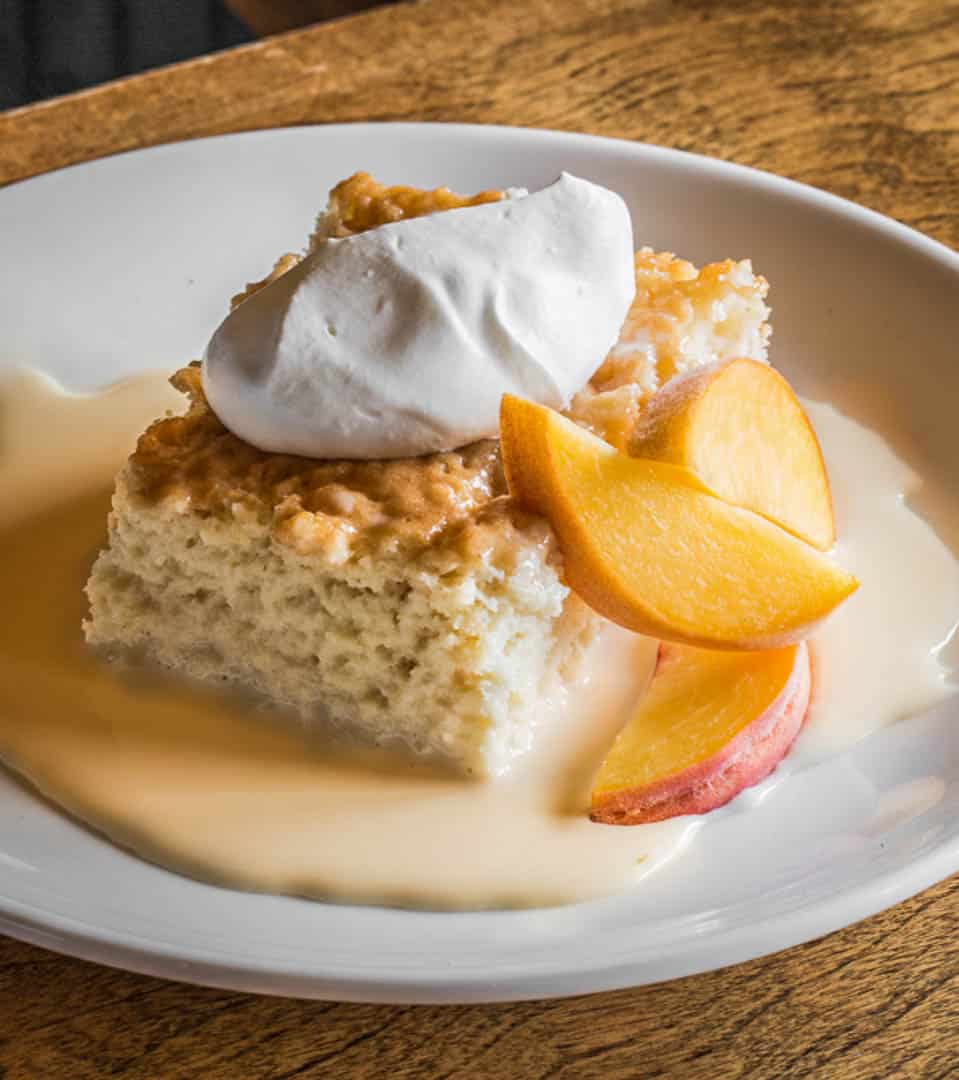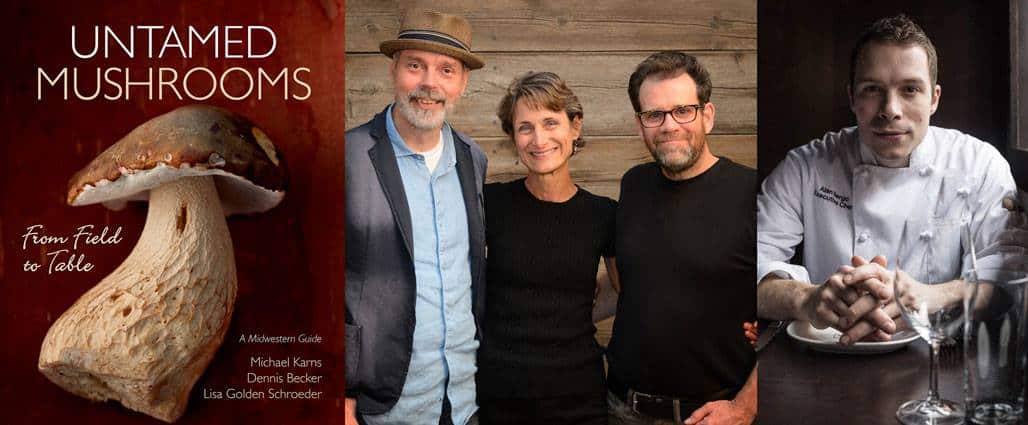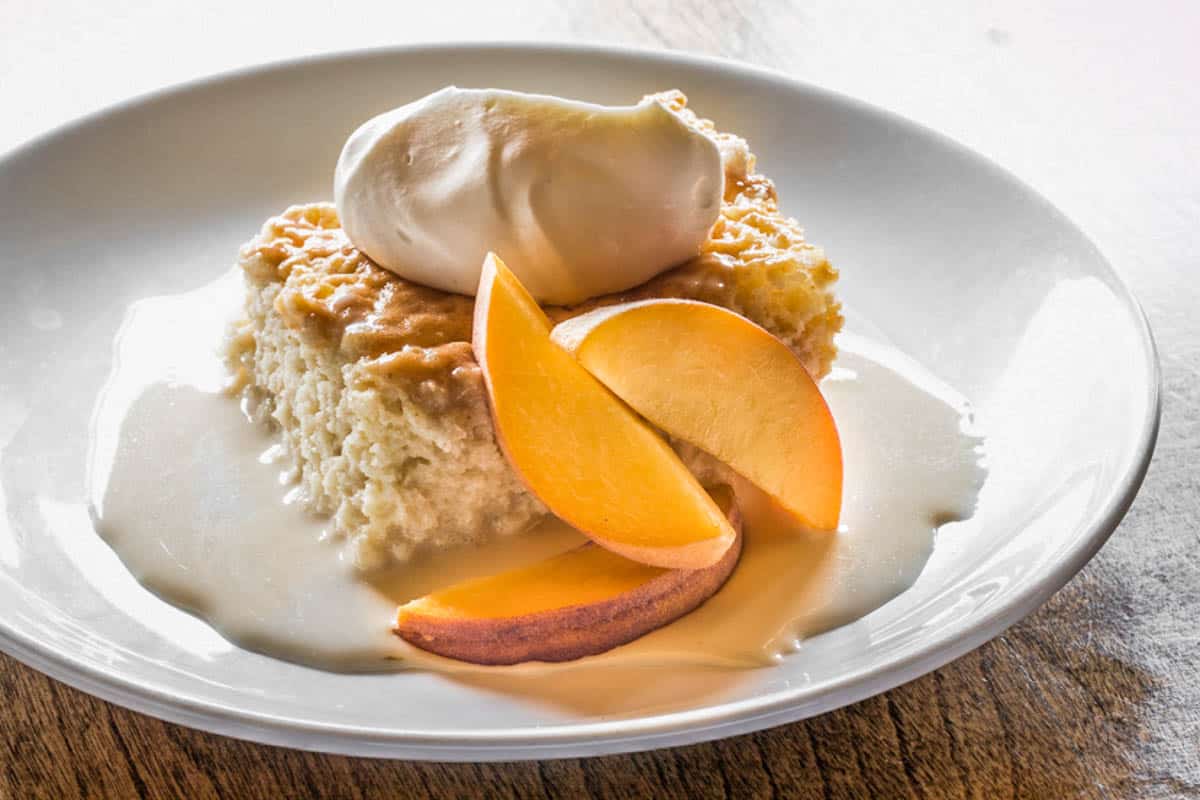If you love tres leches cake, and you like to cook with mushrooms, prepare yourself: candy cap tres leches is one of the best candy cap mushroom recipes of all time.

After Lucia's closed, I didn't feel like running another restaurant quite yet, so I negotiated a part time job consulting on the menu of a little French restaurant near Edina. I was slumming, but I just couldn't bear tackling another large operation just yet.
It wasn't a good fit. I ended up turning what was supposed to be a part time gig into a full time one (per usual). More pointedly, the owner was a bumbling idiot who would do things like "remodel" the bar by ripping boards out of the ceiling drunk on tequila, and hired one of my prized pupils as chef de cuisine, expecting him to do it in 20 hours a week. But, I got an unexpected bonus in that I learned how to make tres leches cake, so, there's that.

I'd never had tres-leches cake before, and, as the it was basically the house dessert, I was unimpressed by its ho-hum look and thought of removing it for a while in favor of something like Fernand Points masterpiece, the gateu marjolaine.
On the plus side, the ol' tres leches was simple enough so that you didn't need to speak English to make it with your eyes closed, and, there weren't any expensive ingredients. Dang if it wasn't good too.

The final event I did at the little restaurant was to host a book launch dinner for my friend Michael Karns and his co-authors who wrote the book Untamed Mushrooms. The savory courses were easy, but I needed a dessert too, and it needed to have mushrooms. Enter the candy cap, lord of the mushroom dinner finale.

Menu from my notes
Shiitake Spring Rolls with Cabbage and Mushroom Ketchup
Warm Pickled Chanterelles with Brie, Bakersfield Sourdough, and Foraged Green-Wildflower Salad
Gnocchi with Lobster Mushroom Bolognese and Parmigiano Reggiano
Candy Cap Tres Leches with Amish Peaches
Candy caps love cream and dairy
I love candy caps for their sickly sweet flavor that tastes more like maple syrup than maple syrup. They're a dream to work with in the kitchen since their flavor is easily transferable to a multitude of cooking mediums (doughs, butter, sugar, syrups, etc). But cream and dairy probably make them slap the hardest, as the kids say.
It's a great variation on the classic, and as the milk absorbs the flavor so well, there's no need to try and incorporate the mushrooms into the batter. It's a piece of cake.

Candy Cap Mushroom Tres Leches Cake
Equipment
- 9x13 inch cake pan
- Stand mixer with whisk attachment
Ingredients
Cake
- 2 cups flour
- 1 Cup sugar
- 7 large eggs
- 1 heaping tablespoon baking powder
- ½ cup half and half
- 2 teaspoons good vanilla extract
- 10 cups candy cap tres leches milk recipe follows
Candy Cap Tres Leches Milk
- 3 cups evaporated milk
- 3 cups sweetened condensed milk
- 2 cups cream
- 2 cups half and half
- 1 cup whole milk
- 10 grams dried candy caps roughly 2 tablespoons, or add them to taste
Instructions
Candy Cap Tres Leches Milk
- Grind the candy caps in a spice grinder, then sift and grind again. Whisk together all the milks and the dried candy caps in a pot, warm it until steaming hot, then cool. The milk should taste strongly of candy caps. Refrigerate the milk overnight to infuse.
- Strain the milk and discard the mushrooms, or just let them settle and only pour off the milk from the top. Since the milk will be used to saturate the cake, leaving the mushrooms in it will mean they could end up on top of the cake after it soaks, which is a little unsightly. Reserve 1.5 cups of the milk for garnishing finished slices of the cake.
Cake
- Preheat the oven to 375. In a stand mixer, whip the eggs and sugar with the whisk attachment for 12 minutes on high until tripled in volume and fluffy. Set a timer, this part is important as it brings the eggs to room temperature and helps it rise properly.
- Meanwhile, stir together the flour and baking powder.
- Mix the half and half with the vanilla.
- Put the half and half into the mixing bowl with the whipped eggs and mix for 1 minute more, then add the flour and mix with the whisk for another 2 minutes on medium speed until completely combined and uniform.
- The final whisking is very important, if you don’t mix it long enough, the gluten strands won’t activate and the cake won’t rise properly.
- Spray a pan with non-stick spray, then pour in the mixture and put in the oven. Do not open the door while the cake is cooking.
- Cook for 35 minutes or until just cooked throughout.
Soaking the cake
- Remove from the oven and immediately begin pouring over the remaining 8 or so cups of tres leches milk mixture onto the cake, a few cups at a time, waiting for the cake to absorb the dairy before adding more. When all the dairy has been absorbed, cool, then wrap in plastic and reserve until needed.
- Save the extra candy cap milk for garnishing finished plates. Allow the cake to saturate for at least an hour before serving. The cake will keep for 4 days in the fridge.*
- Serve with whipped cream, fresh fruit like blueberries, raspberries or peaches, and extra spoonfuls of the reserved candy cap milk.


Patti Wendling
We were at that dinner and it was amazing! Every course was a dream!
Alan Bergo
Thanks Patti.
Velma Sterenberg
Enjoying all your posts Alan and had a good laugh about the road kill. Our goal was always to haul it away before the wildlife officers arrived.
This post has prompted a response because I have lots of fun incorporating fungi into desserts. I am so inspired by this recipe that I'm ordering some dried Lactarius fragilis tomorrow. Alas in the 20+ years I've lived and foraged North of 60, I have only found them once, and not for lack of looking every year. One is always slightly ashamed to have to buy fungi, but this recipe is worth it.
Thank you.
Cheers
Alan Bergo
Thanks Velma. Glad you could get a laugh out of the roadkill. A
Twan
Hi,
Where do you get your candy caps?
Want to work with them for ages but in Europe they are impossible to find.
Alan Bergo
There's a link in the recipe.
Steve Bergo
This was a really fun evening, Mushrooms for desert .... who would have thought that it would be so good!
Alan Bergo
Thanks Dad. Looking forward to seeing you soon!
Donald Nuckel
Just incredible dude!! You rock
Alan Bergo
Thanks Donald.
Nathan Perrier
That was a great evening of culinary delights! The candy cap mushroom cake was delicious.
Dan F
Needs a quick edit, Alan... how many cups of sugar?
Alan Bergo
Thanks Dan, I got it.
Linda
What size was your cake pan? 8x8? 9x13? Restaurant size? (Whatever that is)
Alan Bergo
See the instructions. 9x13
Alan Bergo
9x13. It's in the recipe widget.
Roger Johns
This was delicious.
Alan Bergo
Somehow it got clipped when I copied and pasted it, it’s in there now. Thanks.
Charlie DeSando
Love Tres-leches cake
Michael
This was an amazing dish, and your creative use of Candy-Caps in a subtle dessert really made the flavor shine!
Thanks for the shout-out, Alan... and thank you again for such a memorable event for the launch of our book!
Alan Bergo
Thanks Michael. Looking forward to getting together with you this year.